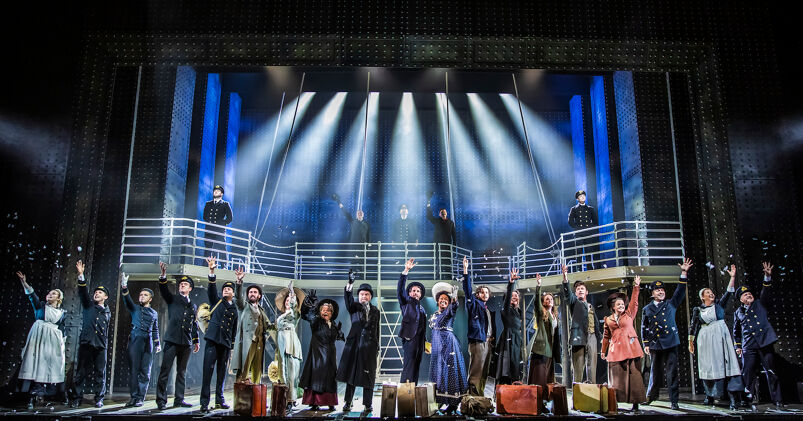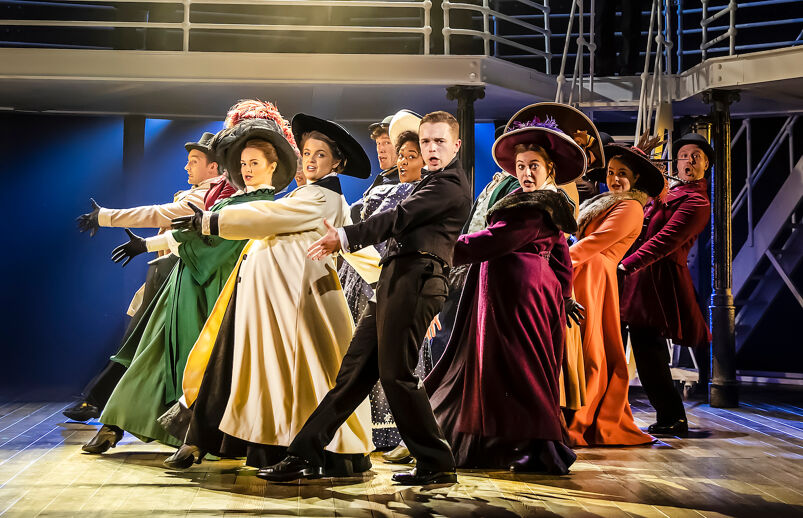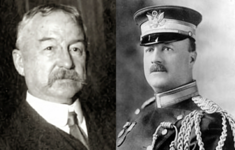
Here’s an oft-overlooked lesson in musical theater history; in 1997, a lesbian saved Titanic: The Musical.
The knives were out, and jokes about a singing version of the century’s most famous maritime catastrophe — “Don’t give away the ending,” “The story left me cold,” and ”Are there enough lifeboats for the audience?” — pretty much wrote themselves. Although few reviewers gave the show an out-and-out pan, critical reception to Titanic: The Musical was largely lukewarm. New York Times chief critic Ben Brantley wrote that the musical “never seems to leave port.”
Enter Rosie O’Donnell. TV’s reigning “queen of nice” loved the show and used her then-top-rated daytime variety talk program as a megaphone to champion the musical. The production took home five Tony Awards, including nods for composer Maury Yeston’s score, Peter Stone’s book, and the coveted Best Musical prize for 1997. Titanic: The Musical ran over 800 performances on Broadway and has since gone on to become a staple in regional theaters and international opera houses.
Related:
Does the Titanic have a secret gay history? All signs point to yes.
The fascinating story of Archibald Butt and Francis Davis Millet, who were maybe-probably much more than “best friends.”
But O’Donnell wasn’t the first nor the last queer connection to a musicalized version of the Titanic story.
In 1964, gay icon Debbie Reynolds played the most famous passenger on Lifeboat Number Six in the film version of the Broadway Musical The Unsinkable Molly Brown. In 1993, composer/lyricist Michael John LaChiusa put a gay couple on the Titanic in one scene of his musicalized version of La Ronde titled Hello Again. And last year, the Céline Dion-infused Off-Broadway and Queerties-nominated hit Titaníque mesmerized New York queer audiences with a cast that included Frankie Grande (and later Rosé). A year later, the “My Heart Will Go On” tuner is going full steam ahead and currently features original LA cast member Drew Droege in the role of meddling mother Ruth.
Next June, the Yeston-Stone Titanic: The Musical returns to the New York stage as part of City Center’s Encores! series. But audiences eager for the award-winning show needn’t wait. On November 4 and 8, Fathom Events and BY Experience will screen the recently filmed UK tour of the multi-Tony Award-winning musical to more than 700 movie theaters nationwide.
For those unfamiliar, Rose and Jack (and that floating door that could easily have accommodated two) from James Cameron’s 1998 Academy Award-winning film do not appear in Titanic: The Musical.
Based on the historic 1912 sinking, the musical mainly focuses on the hopes and dreams of second- and third-class passengers and crew members. These include a combination of fictionalized and based-on-real-life characters, including Irish immigrants, a below-deck coal stoker, and telegraph operator Harold Bride. A social-climbing second-class passenger provides a comic look and quick exposition on the lives of the ship’s A-list passengers Benjamin Guggenheim, John Jacob Astor IV, and Isadora and Ida Strauss, who all lost their lives on the ill-fated maiden voyage. (For another Titanic Broadway reference, discover the connection between some of the ship’s passengers and the Hudson Theatre, currently home to Merrily We Roll Along.)
Related:
Jonathan Groff in a throuple? Two Broadway stans debate Sondheim’s biggest flop-turned-hit
Jonathan Groff, Daniel Radcliffe, and Lindsay Mendez headline the first-ever Broadway revival of “Merrily We Roll Along.”
The main physical challenge of all productions of Titanic is how to capture the magnitude of the ship that, early in the musical, Yeston’s lyrics describe as “Forty-six thousand tons of steel, eleven stories high.” On Broadway, designer Stewart Laing’s Tony Award-winning design boasted multiple levels, stylized forced-perspective backdrops, and a deck that tilted 45 degrees during the sinking scene.
For the filmed UK revival, designer David Woodhead’s mostly unit set consists of staircases, ropes, and decks. Riveted steel climbs the height of the stage’s real wall to suggest the immensity of the ship. For the final sinking tableau, Woodhead and director Thom Sutherland shift the focus from starboard to stern. The simple effect is chilling.

As filmed for the Fathom/BY release, the cinematography cleverly relies on close-ups to enhance the characters’ personal stories and draw focus away from the lack of realistic scenery. The tight shots also allow the audience to appreciate the cast’s full range as they portray Titanic’s inhabitants, playing steerage passengers in one scene, then quickly transforming into millionaires in the next. Standouts are Bree Smith as starstruck second-class passenger Alice Beane, Martin Allanson as the hissable White Star Line managing director Bruce Ismay, and Ian McLarnon as rueful ship architect Thomas Andrews.
The real star of Titanic: The Musical will always be composer/lyricist Maury Yeston, whose lush score captures the hopes, aspirations, and ultimate terror of Titanic’s passengers. These include a soaring opening anthem, a Gilbert and Sullivan-inspired pastiche for the first-class passengers, and a marriage proposal and ode to technology duet for the coal stoker and telegraphed.
Twenty-six years ago, when the show debuted, New York Times critic Brantley derided the score for sounding like “Sweeney Todd meets Jaws.” But as someone who loves both Sweeney Todd and Jaws, the pairing is perfect for this theatergoer. Hey, Rosie liked it. And even though “My Heart Will Go On” is nowhere to be heard, Titanic‘s legacy continues.
Titanic: The Musical screens at select theaters on November 4 and 8.






















